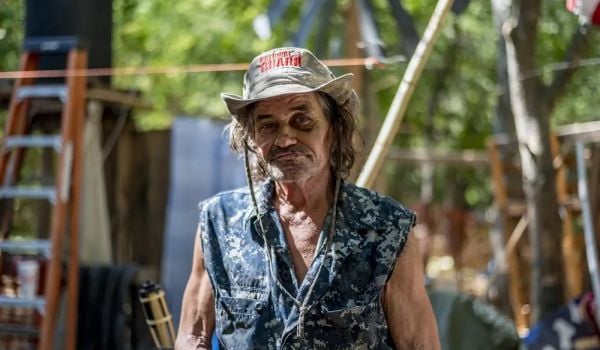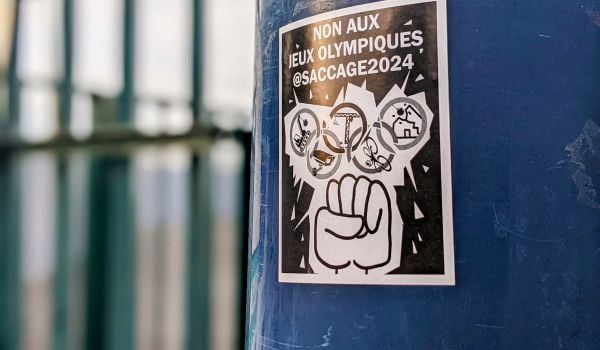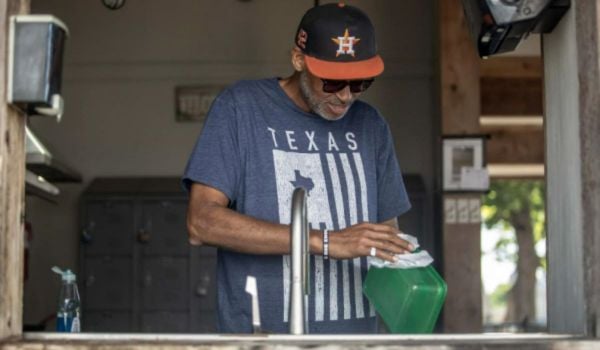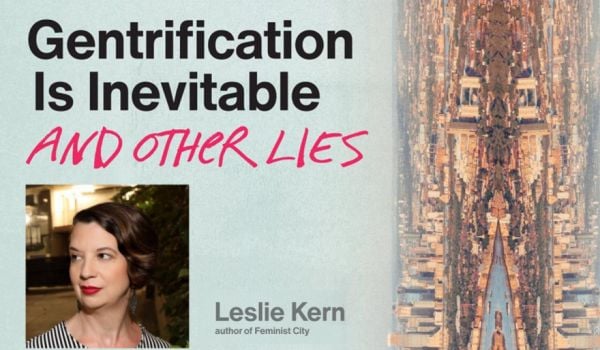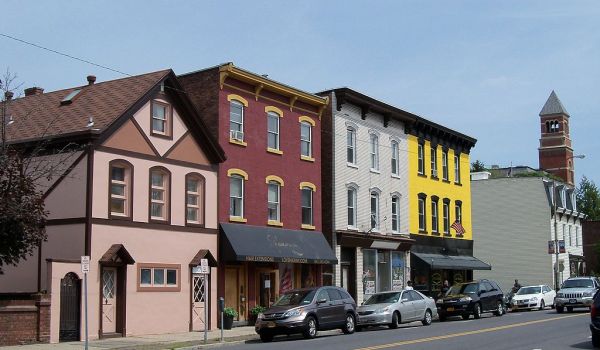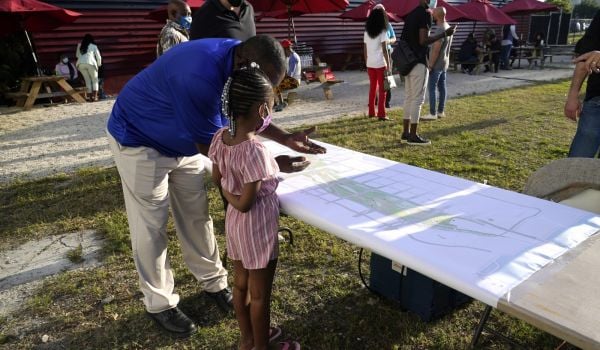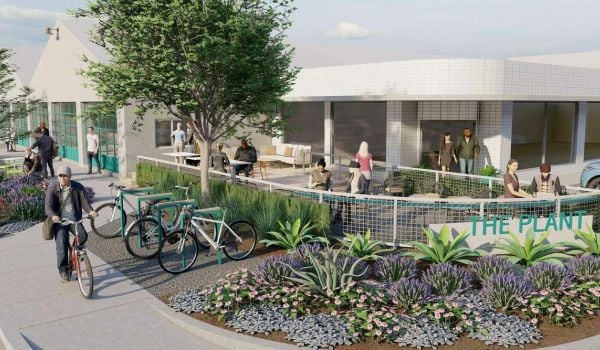Every day, as executive director of Six Square, Austin´s black cultural district, Nefertitti Jackmon confronts a racial history going back to at least the city’s 1928 segregation plan. The plan, Jackmon explains, pushed the city´s black population into the eastern part of the city, denying services such as paved roads and garbage collection to those who chose not to move.
Those who did move, made the best of it. “All the black schools and businesses, churches, etc. were [in east Austin]. So, there grew a strong, thriving, African-American community,” says Jackmon.
In the same week that Austin recognized the 90th anniversary of that segregation plan, the city announced a new effort to confront the latest chapter of the plan’s history: the displacement of black households from some of the very same neighborhoods where racist policies and lending practices once forced them to live. The city was announced as one of ten participating in the newly announced All-In Cities Anti-Displacement Policy Network.
As part of the new network’s activities, Jackmon is serving a member of the Austin Anti-Displacement Task Force, which is charged with developing a set of recommendations to present to the city council by October.
“Many people thought that gentrification was a natural effect of market forces,” Jackmon says. “But even if it is market forces, at what point does the government intervene to maintain the quality of life for the community? The government needs to intervene when there’s something that’s off-balance.”
The other cities in the anti-displacement network: Boston; Buffalo, N.Y.; Denver; Nashville, Tenn.; Philadelphia; Portland, Ore.; San José, Calif.; Santa Fe, N.M.; and the Twin Cities.
“Austin remains one of the most economically and physically segregated cities in the nation, and [it has] a rapidly declining African-American population. The urban core is only about eight percent [Black],” Jackmon says.
Chris Schildt is a senior associate at PolicyLink, the equity-focused research and advocacy organization that created the anti-displacement network. With a background in equitable housing and economic development policy, Schildt says that while the country has seen an “urban resurgence,” not everyone is benefitting.
“We see that [displacement] is very much a racial-equity challenge in terms of who is able to stay and benefit and who is being stuck in poverty through unsustainable housing policies right now,” she says.
Rising rents are largely to blame. The majority of residents of the United States´ 100 largest cities rent. More than half, 51 percent, are rent burdened, meaning that tenants pay more than 30 percent of their income on rent. Zooming in on women of color, nearly two thirds of black women face burdensome rents. The percentage of Latina women facing rent burdens is only slightly lower. When something goes wrong, such as an illness or an unexpected repair, people struggling with burdensome rents can easily find themselves evicted and, ultimately, completely displaced from their communities.
In trendy cities like Austin, rents continue rising even as new housing construction has been on an upward trend since 2010, reaching pre-recession levels.
The issue of rent burden is personal for Jackmon, who moved to Austin about a year ago, from Houston.
“I’m paying double what I was paying in Houston. The rents actually caught me off-guard. And I live in a very small space,” she says.
The challenges ripple beyond housing. Jackmon points out that communities are eco-systems, and disrupting one element, for example through higher taxes or rents that push out people of lesser means, creates ripple effects.
“There was a piñata store that got shut down,” says Jackmon. “Many of their customers had gone and left the area. How do you support small businesses if the families that support those businesses are gone?”
Schildt says the All-in-Cities Anti-Displacement Network will work to help cities develop tailored responses to their unique displacement challenges.
In the state of Texas, cities like Austin face some key restrictions on the kinds of initiatives they can launch to combat displacement, according to Erika Leak, Associate Director of neighborhood housing and community development for Austin.
“In Texas, we can’t have rent restrictions. It’s really hard to do much in the way of tenant protections. There are just a lot of things that we can’t do,” Leak says. “We have to think about whether there are enough cities in Texas that would rally around important legislative changes to help with affordability, and one of those would be a property-tax exemption specifically for lower-income families, and right now that’s something we can’t do.”
Jackmon says the task force is looking to develop more “actionable items,” including items aimed at enabling homeowners with high tax burdens to stay in their homes, with or without legislative support at the state level.
“The City of Austin adopted a strategic housing blueprint in 2017, and one of the key values in the document was to reduce displacement,” Leak said. “One ongoing best practice that we have heard about is just making sure to have as much income-restricted affordable housing as possible so that it will stay affordable over the long term.”
One solution the Housing Authority of the City of Austin has tried in the past: working with a partner to acquire market rate-housing on the open market and convert all or part of the acquisition into affordable housing. One such transaction took place in 2015, when the authority partnered with Community Development Trust to acquire 600 units of market-rate housing on the open market, converting half into units reserved for households earning up to 80 percent of area median income (the authority arranged for a 100 percent property tax rebate to subsidize the affordable units). That’s 300 new units of affordable housing with the stroke of a pen.
Still, Jackmon acknowledges that many in Austin are frustrated since this is not the first time the city has studied its gentrification problem.
“No one has come up with a solution,” she said. “I think the government has to intervene at this time.”

Zoe Sullivan is a multimedia journalist and visual artist with experience on the U.S. Gulf Coast, Argentina, Brazil, and Kenya. Her radio work has appeared on outlets such as BBC, Marketplace, Radio France International, Free Speech Radio News and DW. Her writing has appeared on outlets such as The Guardian, Al Jazeera America and The Crisis.
Follow Zoe .(JavaScript must be enabled to view this email address)


